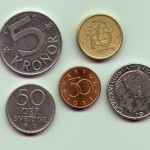WTI and Brent futures were slightly higher during early trade in Europe today. Traders await the US oil inventories report later today, which will probably reveal a sizable draw for crude stocks. Iraq remained in the backdrop, as traders come to the realization that the southern oilfields are safe.
West Texas Intermediate futures for settlement in August traded for $105.45 per barrel at 6:54 GMT on the New York Mercantile Exchange, up 0.10%. Prices ranged from $105.20 to $105.50 per barrel. The US contract dropped 0.03% yesterday, after a 0.35% drop on Monday.
Meanwhile on the ICE in London, Brent futures due in August stood for a 0.02% drop at $112.27 per barrel. Daily high and low stood at $112.42 and $112.08 per barrel, respectively. Brent’s premium to WTI stood at $6.82, after last sessions closing margin of $6.95. The European contract dropped 0.06% on Tuesday, after a 0.83% drop on Monday.
“Markets are watching to see what’s happening in the U.S. now that we’re in drive-time,” David Lennox, a resource analyst at Fat Prophets in Sydney, said for Bloomberg. “The southern part of Iraq at this point has been free from fighting.”
US oil reports
The private American Petroleum Institute (API) released its readings on US oil inventories on Tuesday. Crude supplies were reported to have lost 0.876 million barrels in the seven days ended June 27, while gasoline and distillates were at -0.407 million and 4.4 million barrels, respectively. The official Energy Information Administration (EIA) report is due later today. A Bloomberg survey suggested a 2.4 million-barrel draw for crude and 0.55 million-barrel gain for gasoline stocks.
Last weeks EIA log revealed a 1.742 million-barrel gain for commercial crude oil inventories, while gasoline and distillates added 0.7 and 0.4 million barrels, respectively. Refineries were shown to have operated at an increasing pace of 88.5%, though gasoline production was down almost 10%. Oil at Cushing was slightly more than previously.
US outlook
The US, which account for 21% of total oil consumption, will post several key economic reports today. ADP will reveal its reading on employment for June, ahead of the official report on Thursday. Factory orders for May will also be revealed today, and analysts suggest a -0.3% figure on a monthly basis, after the 0.7% growth in April.
Thursday will feature the key report on employment for June. The unemployment rate is set for an unchanged 6.3%, while nonfarm payrolls have probably added 210 000 – 213 000, after a 217 000 figure for May. Payrolls are a leading indicator for the overall health of the economy. Also tomorrow, ISM will post its non-manufacturing PMI for June, and experts suggest accelerating growth in the services sector as well.
Previously, ISM revealed its June manufacturing for the US yesterday, for a slightly worse-than-expected growth, but sizable growth nonetheless.
Iraq
Abu Bakr al-Baghdadi, the leader of the Sunni-extremist Islamic State in Syria and the Levant (ISIS), called on Muslims everywhere to flock to the new “Islamic state”, and demanded they take the path of Jihad, the BBC reported. The group proclaimed the creation of the “Islamic state” earlier and declared its leader a “Caliph”, adding that all Muslims owe him allegiance and “reject democracy and other garbage from the West”.
In Syria, where ISIS also has a strong grip on vast swathes of land, militants paraded with armored personnel carriers and other military hardware, including a SCUD missile. The insurgents are said to be fighting both the Syrian authorities and other, more moderate opposition forces. The Syrian military bombed positions of the militants in Iraq last week, in a move welcomed by Iraqi PM Nouri Maliki.
Meanwhile, the Iraqi military have had inconclusive fights with militants for the city of Tikrit. The army was urgently reinforced by Russian and Belorussian fighter aircraft, purchased by the government in haste. Elsewhere, militants tighten their grip on the northern provinces of the country, with the Kurdish semi-autonomous state recently joining the fight against the jihadists.
Kurds and Sunnis
In Baghdad, the Iraqi government failed to elect a new leadership, as Sunni-Muslim and Kurdish representatives boycotted the vote and the election body failed to reach a quorum. The current Iraqi government, led by PM Maliki, is said to be quite exclusive of ethnicities other than Shia-Muslims, which represent about 65% of Iraqs population.
The Kurdish semi-autonomous government in northern Iraq has recently come under attack by ISIS, and its military is seen as stout defense of the major northern oilfield around Kirkuk. The Kurds occupied Kirkuk, which lies beyond the autonomous governments borders, after the Iraqi army fled from the Islamists. Now the Kurds, who have long yearned independence, claim they will not leave Kirkuk before an independence referendum takes place.
Israel spoke in support of an independent Kurdish state earlier this week. The Kurds “are a nation of fighters and have proved political commitment and are worthy of independence,” Israeli Prime Minister Benjamin Netanyahu said.
The Iraqi government insists insurgents do not threaten Baghdad, nor the southern oilfields, which account for more than 75% of Iraqi oil output. Furthermore, the Iraqi oil minister said production and exports will actually increase over the next month.
Iraq is OPEC’s second-top oil producer, and exports some 3 million barrels per day from its main southern terminal at Basra.
Technical view
According to Binary Tribune’s daily analysis, in case the West Texas Intermediate August future on the NYMEX breaches the first resistance level at $106.09, it probably will continue up to test $106.83. Should the second key resistance be broken, the US benchmark will most likely attempt to advance to $107.58.
If the contract manages to breach the first key support at $104.60, it will probably continue to drop and test $103.85. With this second key support broken, the movement to the downside will probably continue to $103.11.
Meanwhile, August Brent on the ICE will see its first resistance level at $112.80. If breached, it will probably rise and probe $113.30. In case the second key resistance is broken, the European crude benchmark will probably attempt to advance to $113.78.
If Brent manages to penetrate the first key support at $111.82, it will likely continue down to test $111.34. With the second support broken, downside movement may extend to $110.84 per barrel.





